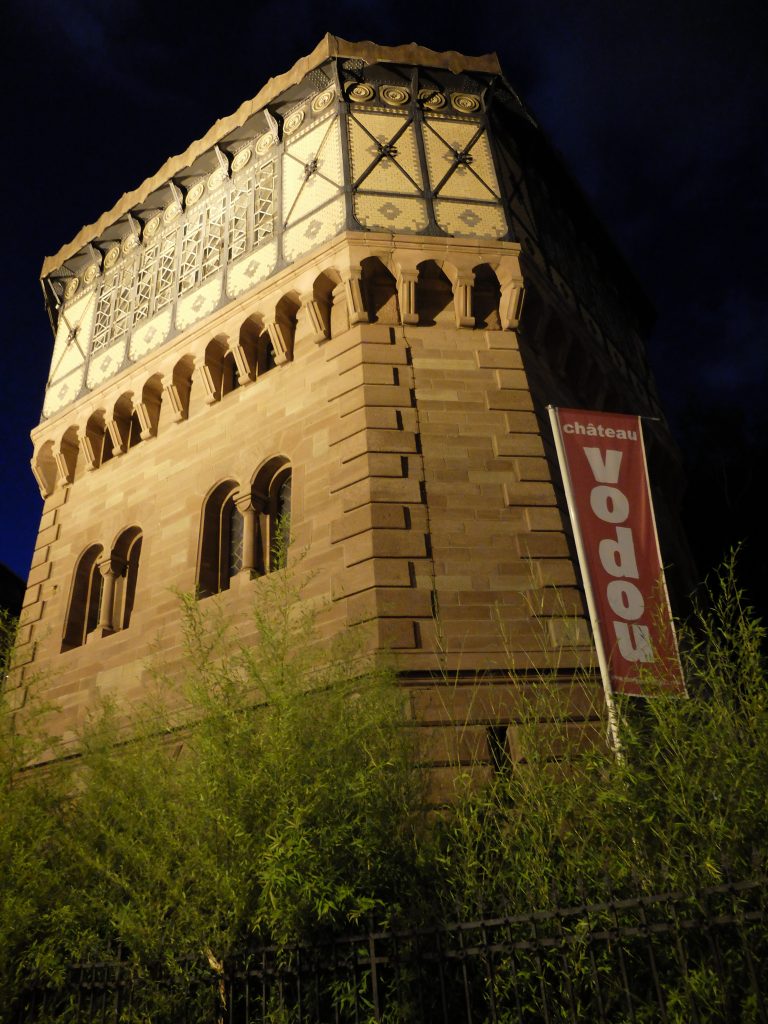The water tower
History of the building
The building which houses the Museum was originally a water tower built during the German rule of 1878 – 1883 by Berlin-based architect Johan Eduard Jacobsthal (1839-1902). He also devised the Berlin Stadtbahn (urban railway), as well as designing the Alexanderplatz and Bellevue stations in Berlin, and Metz station, now converted into offices. It is a massive, octagonal, neo-Romanesque building with a red sandstone base. It is crowned with a yellow brick structure decorated with metal latticework and geometric windows. It was designed alongside the Strasbourg main station, and one of the first buildings to be erected after the annexation of Alsace in 1871, in the wake of the Franco-Prussian war.
The water tower was used to supply steam locomotives with water. Since there was no running water in town at the time, the Reichsbahn workers and later the French rail workers made use of the available water, and used to bathe in the communal washrooms located on the first floor.



